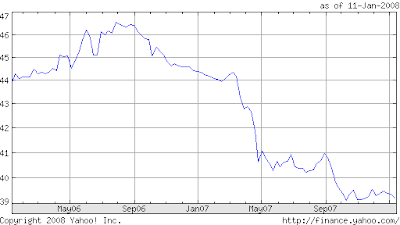I watched as the minute hand of my clock raced
endlessly around the face. The prospect of choosing a
stock the next morning to invest my college savings in
was keeping me awake. I had decided to invest my money
in a stock because there was still a long time before I
went to college, and I knew that in the long run,
stocks could provide the greatest return on my money.
Eventually, I fell asleep. Suddenly, I was strolling
through a town, next to a stockbroker and the three
little pigs from my favorite children’s storybook.
“Where are we going?” I asked.
“Today we are going stock shopping to find the perfect
stock to invest our college savings in, just like you!”
explained the first little pig enthusiastically.
As we approached the first stock, I realized that the
stock was in the shape of a straw hut. “Pick me!” it
wailed. “I’m the least expensive, so you can buy more
shares of me than the more expensive stocks.”
“Say no more,” interjected the first little pig. “I
choose to invest in you.” I could tell this was a
mistake by the stockbroker’s irritated expression.
The other two little pigs, the stockbroker, and I
continued on our search. Along the way, I decided to
ask the stockbroker why he was upset.
“That stock was not a cheap stock,” he explained. “You
cannot tell how inexpensive a stock is by just looking
at its price. You must consider the price/earnings
ratio, which tells you how much you must spend to get a
dollar’s worth of the company’s earnings.”
We arrived at the second stock, which was also in the
shape of a house; however, this house was made of
sticks.
“Invest in me!” it begged. “My company is marketing a
new medicine to cure cancer.”
“Say no more,” interrupted the second pig, confidently.
“I choose to invest in you.”
The last little pig, the stockbroker and I resumed our
journey for the perfect stock. I had thought that the
second pig had made a wise decision, but immediately
after beginning on our journey, the stockbroker
elucidated why he was so upset by the second pig’s
choice.
“The second pig did not invest—he speculated. Investing
is for long-term profit, whereas speculating is for
short-term profit (not for investing for the future).
He didn’t know anything about that company or the
product. By speculating, the second pig took the risk
of the new medicine being a scam and losing all his
money. ”
The third stock, just as the last two, was in the shape
of a house. It looked much better than the other two
stocks. It was made out of brick and it looked strong
and sturdy. Immediately, I could tell the stockbroker
also agreed by the approving smile on his face.
“I am the Nationwide Insurance stock,” it informed.
Finally a stock whose company I was familiar with.
“Invest in me! Clothes, cell phones, and furniture go
in and out of style; however, insurance never goes out
of style. Everyone needs insurance if they want to own
a house, a car, or a business. Insurance protects from
tornadoes, fires, and even big bad wolves!”
I used my new knowledge to question the stock. “What is
your P/E ratio?”
“My P/E ratio is extremely low, which is extremely good
for investors.”
“I’m investing my future in the future of your company,
so how do I know that your future will be successful?”
I asked.
“Natural and man-made disasters are always occurring,
so people will always need insurance. Insurance is a
priority, not a luxury. When money is tight, people
stop buying clothes, computers, and other luxuries.
However, they always keep their insurance.”
Finally, I felt confident in investing in a stock. “Say
no more,” I said. “I would be happy to invest in you.”
The stockbroker smiled, and I knew I had made a wise
decision. The third little pig also invested in
Nationwide because it had a low price/earnings ratio,
and a bright future.
The next morning, I awoke knowing exactly what stock to
invest in: Nationwide because it’s a brick-strong
investment.
Olivia Goldberg’s winning First Place Investwrite Essay – Spring 2007, 6-8 Grade Division.




















